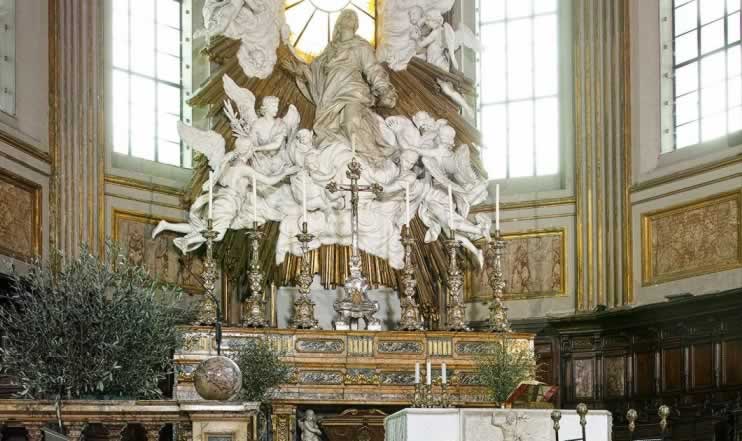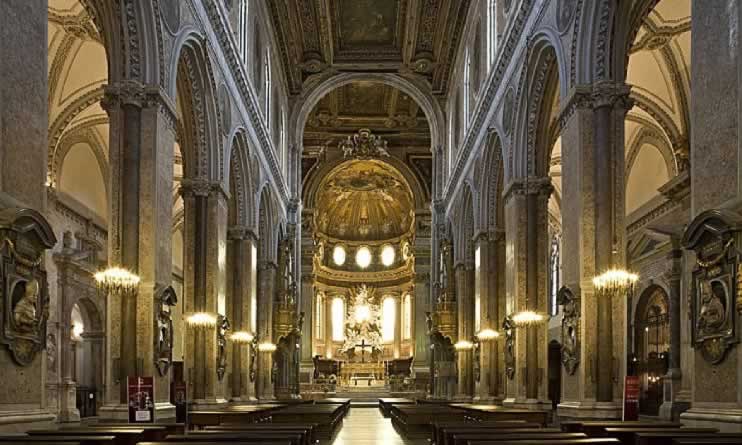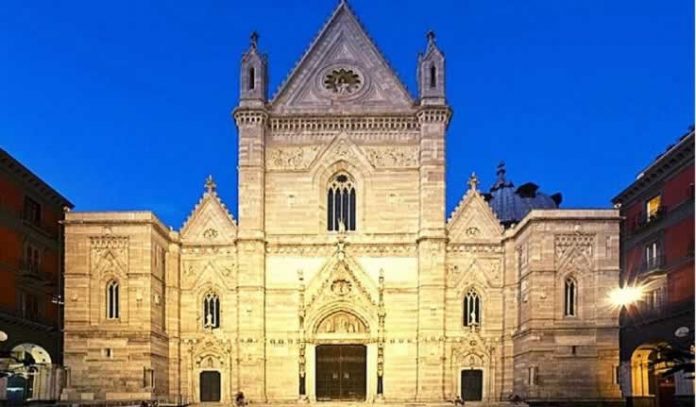The Cathedral of Naples, or the Cathedral of Santa Maria Assunta, stands as one of Italy’s most imposing and significant cathedrals. Located in the heart of Naples, this religious edifice is a masterpiece of history and art, dating back to the 13th century and continuing to awe visitors and believers with its magnificence.
History and Architecture
Construction of the Cathedral of Naples began in 1294, commissioned by Charles II of Anjou, and was completed in the 14th century. The cathedral is a splendid example of Gothic architecture, with influences of Romanesque and Baroque styles due to subsequent restorations. The Gothic façade, completed in the 19th century, welcomes visitors with its three large bronze doors and an elaborate rose window.
Cathedral’s interior is divided into three naves, supported by Gothic columns. It houses numerous chapels, each boasting unique artistic features. Of particular note is the Chapel of San Gennaro, with its baroque decorations and the famous ampoule containing the blood of the saint, central to the miracle of liquefaction.


The miracle of San Gennaro
One of the most significant events associated with the Cathedral of Naples is the miracle of the liquefaction of San Gennaro’s blood, which occurs three times a year. This phenomenon draws thousands of faithful and curious, eager to witness this moment of deep spirituality and tradition.
The Cathedral holds invaluable artistic treasures, including paintings, sculptures, and mosaics. Noteworthy is the Baptistery of San Giovanni in Fonte, the oldest Western baptistery, famous for its extraordinary Byzantine mosaics. Other points of interest are the tombs of kings and Neapolitan nobles, reflecting the cathedral’s historical connection with the city and its rulers.
The crypt and the museum of the Treasure of San Gennaro
Beneath the cathedral lies the Crypt, an intimate and historically rich space where the relics of San Gennaro are kept. The Treasure Museum, on the other hand, exhibits a unique collection of sacred art, liturgical objects, and precious donations made to the saint over the centuries.

Curiosities
A curiosity related to the Cathedral of Naples is the presence of a broken column at the entrance, symbolizing the damage suffered during the earthquake of 1456. Moreover, the cathedral has been the venue for significant historical events, including the coronation of Charles of Bourbon as the King of Naples in 1735.
What to see during the visit
During your visit to the Cathedral of Naples, don’t miss:
- The Chapel of San Gennaro: Admire its artistic riches and the famous reliquary.
- The Baptistery of San Giovanni in Fonte: A jewel of Byzantine mosaics.
- The Crypt and the Treasure Museum: Discover the secrets and treasures hidden within the cathedral.
- The Artworks: Every corner of the cathedral is embellished with artistic masterpieces.
The Cathedral of Naples is not just a place of worship but an emblem of Naples’ cultural and artistic identity. Visiting this cathedral is to embark on a journey through centuries of history, art, and faith, an unforgettable experience in the heart of this vibrant city. If you are planning your holiday to visit Naples Italy, visit the Cathedral of Naples is one of the things to do.
- View on Google Maps
- Distance 900 meters from Dante Metro Station
